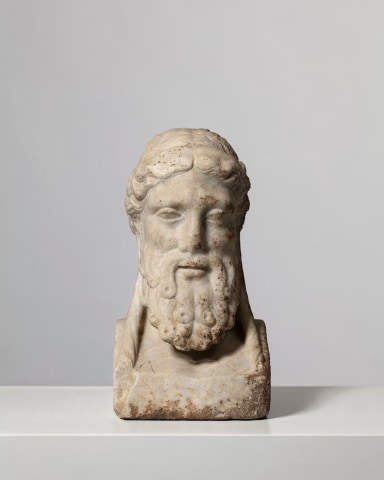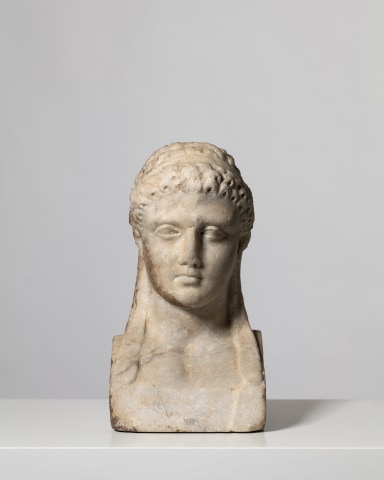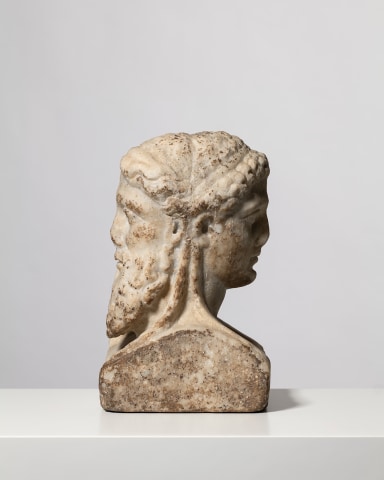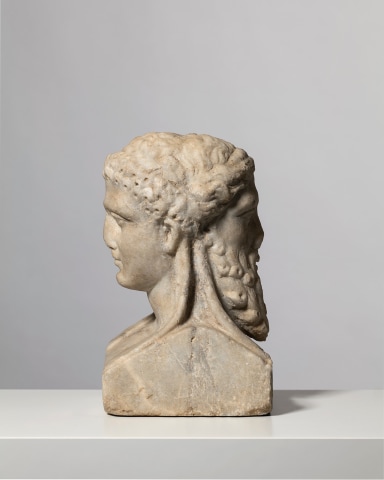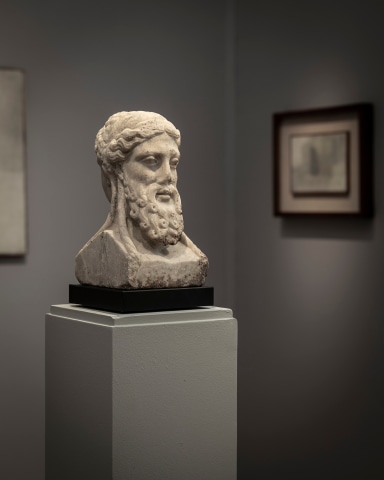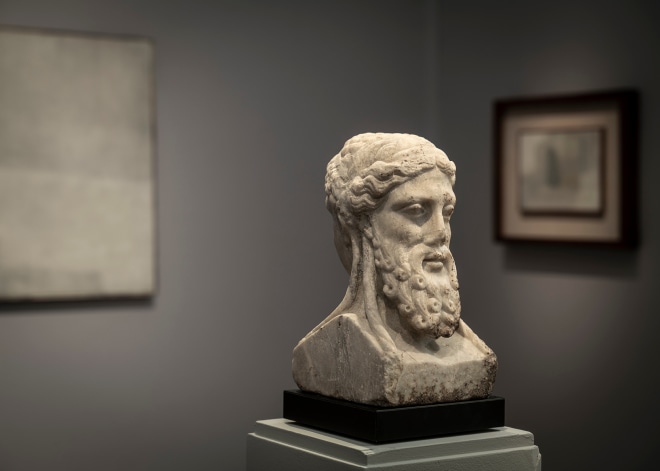Further images
The surface has attractive rootilation and staining, the tip of each nose chipped. On the younger face there is a crack along the bridge of the nose and a small area of restoration to the chin.
In the Greek period a head of Hermes would sit atop a tall, square-sided pillar, often with an erect phallus carved halfway down. Traditionally herms were placed along roads to mark distances, boundaries and crossroads; the subject matter being appropriate as Hermes was a protector for travellers.
However, by the Roman Period these herms had lost much of their religious significance and instead became a popular garden and courtyard ornament.
The term janiform derives from Janus, the Roman god of doors, openings and the new year, for he was two-faced and could look both into the past and the future.
Provenance
Charles Loeser (1864-1928), Florence, Italy and New York, USA; removed from Torri Gattaia, Florence, Italy
Private collection, London, UK; by descent from the above by the 1950s
Sotheby & Co., London, UK, Fine Egyptian, Greek, Roman, Assyrian and Celtic Antiquities, 11th April 1960, lot 162
Sotheby Parke Bernet, New York, USA, Antiquities and Islamic Works of Art, 8th May 1976, lot 313
Professor & Mrs Sid Port, Santa Monica, USA; acquired from the above
Christie’s, New York, USA, Antiquities, 12th June 2002, lot 205 Private collection, Switzerland; acquired October 2002
Loeser was born in New York, then moved to Florence in 1890 where in 1908 he bought Villa Torri Gattaia and devoted himself to his studies and collecting works of art and furniture. By the time he died in 1928 his collection numbered over 1,000 pieces. He was one of the earliest collectors of Cezanne, and although most of his works of art were dated to the Italian Medieval and Renaissance periods, he also had several fine ancient sculptures.
Loeser is buried at Cimitero Evangelico agli Allori in Florence. In his will he stated that the President of the United States would be able to choose eight of his Cezannes "to adorn the White House", and bequeathed his collection of Old Master prints and drawings to the Fogg Art Museum, Harvard University, and over thirty pieces to Florence CIty Council where they can still be seen in Palazzo Vecchio.
Publications
Sotheby & Co., London, UK, Fine Egyptian, Greek, Roman, Assyrian
and Celtic Antiquities, 11th April 1960, lot 162
Sotheby Parke Bernet, New York, USA, Antiquities and Islamic
Works of Art, 8th May 1976, lot 313
Christie’s, New York, USA, Antiquities, 12th June 2002, lot 205
